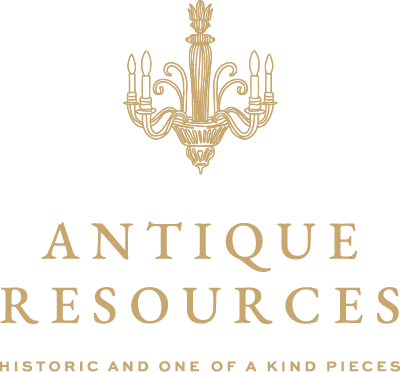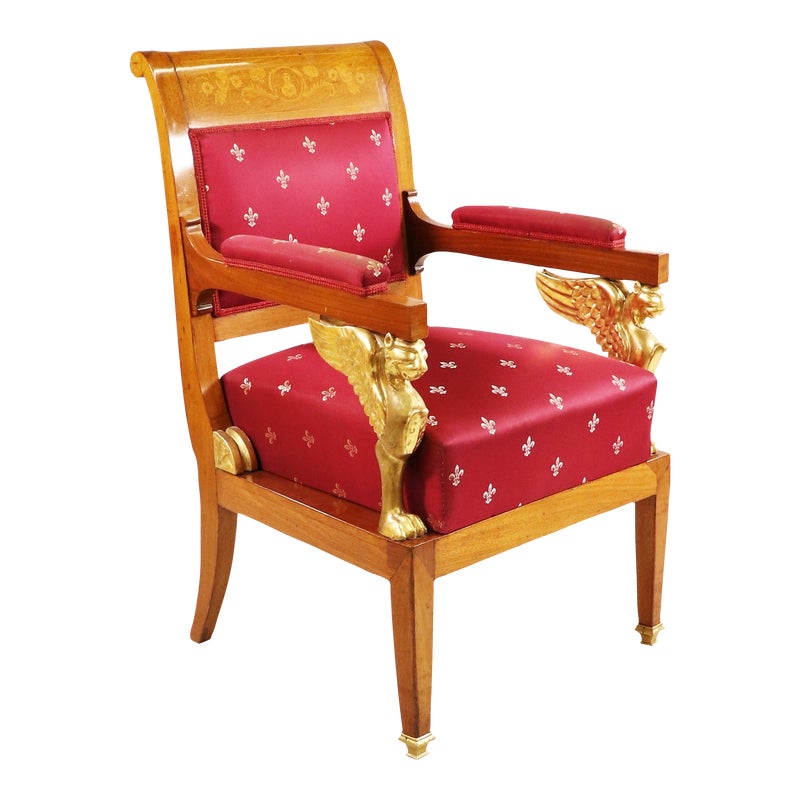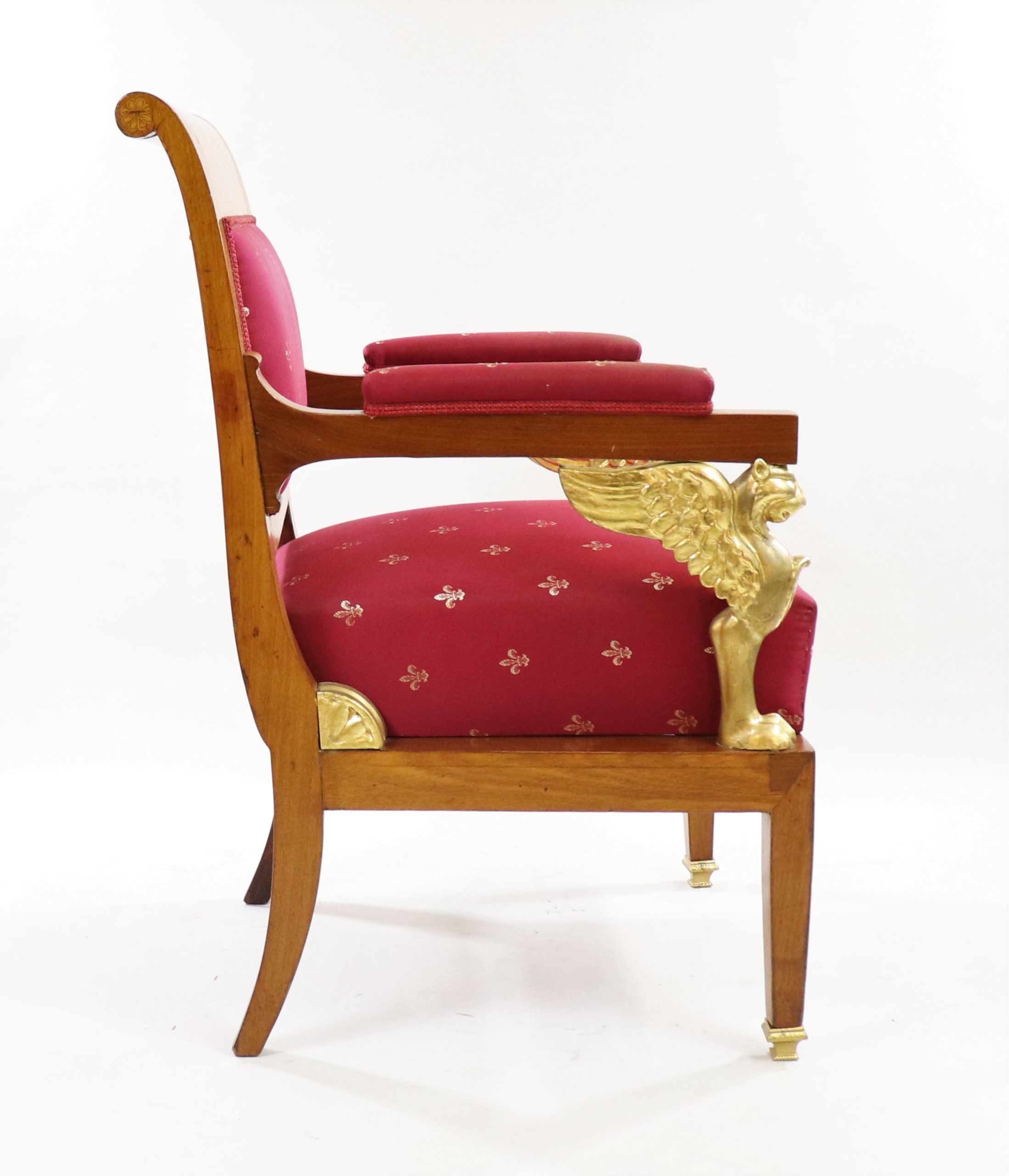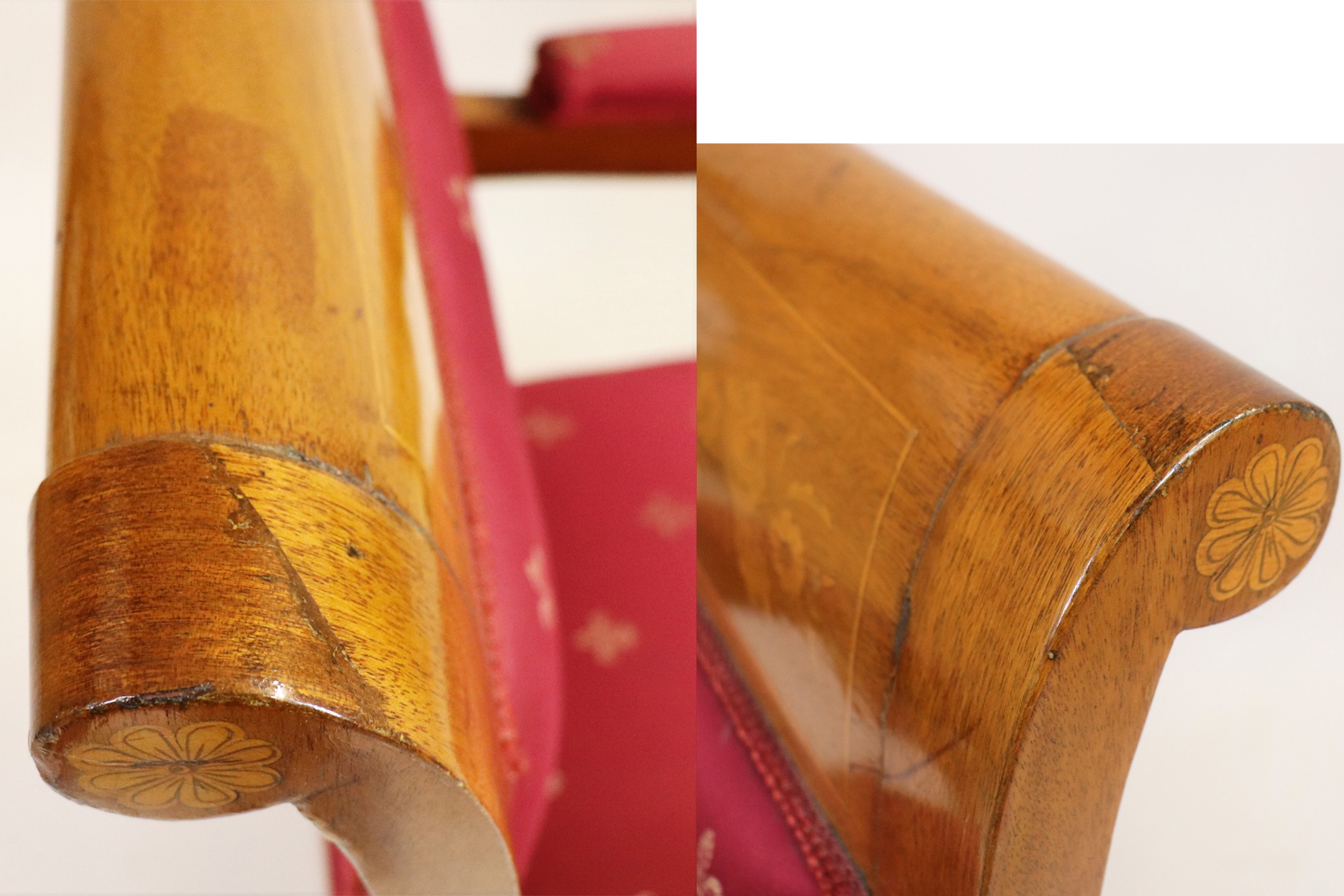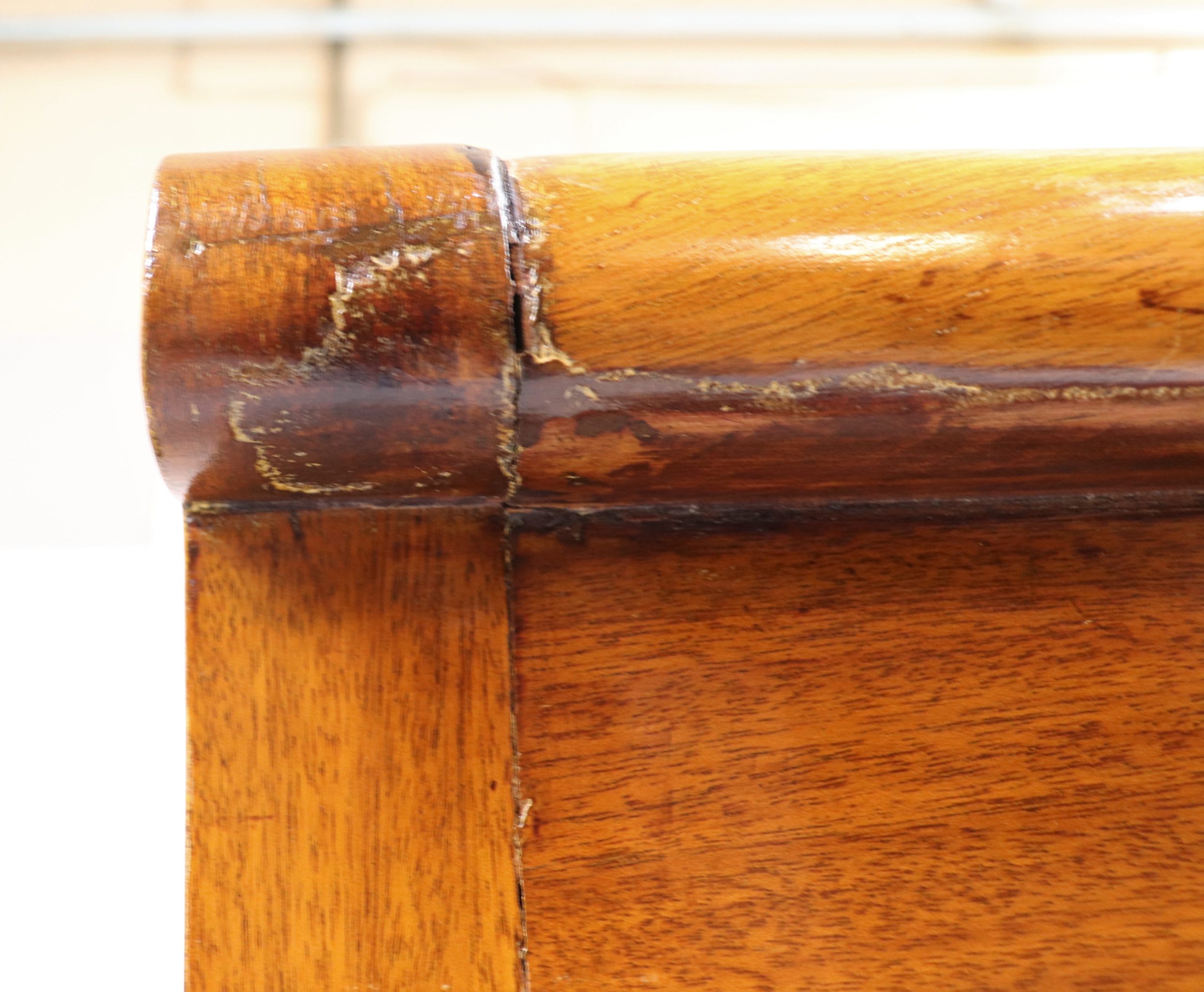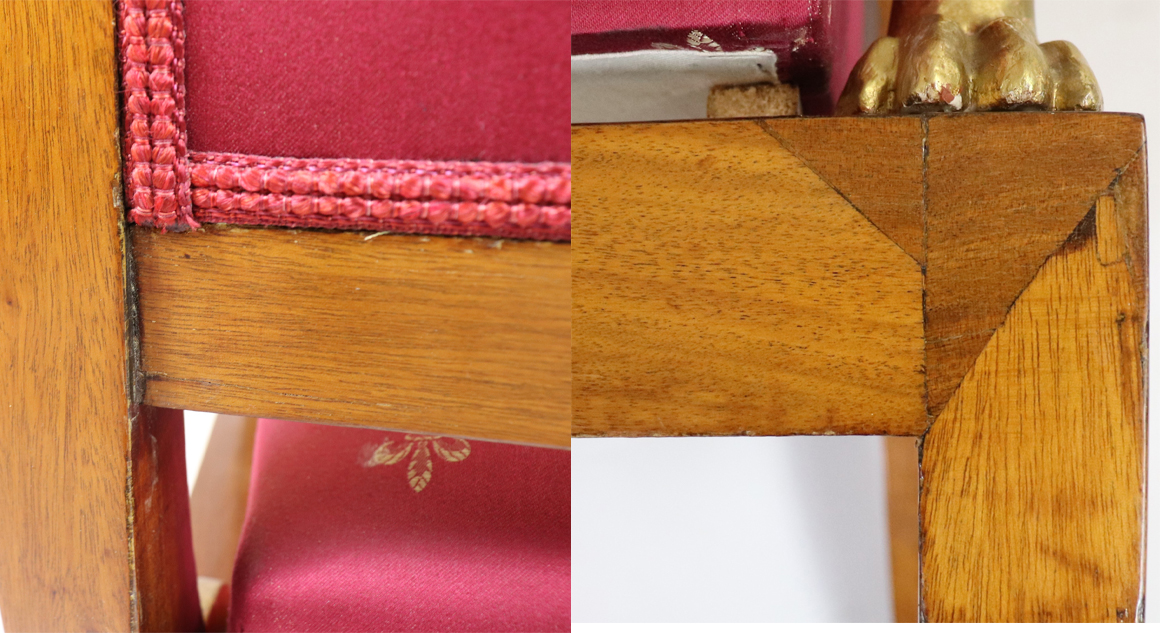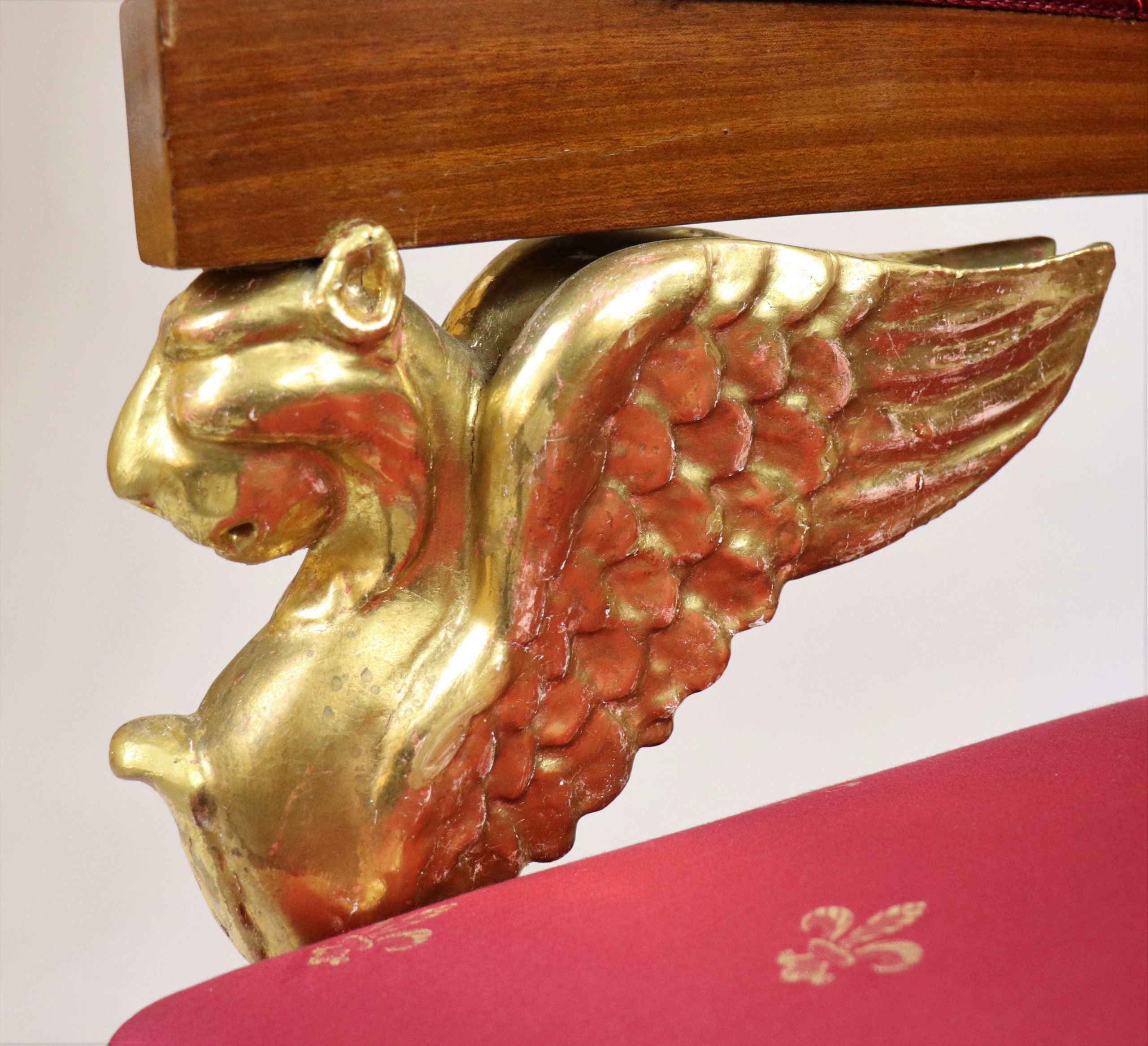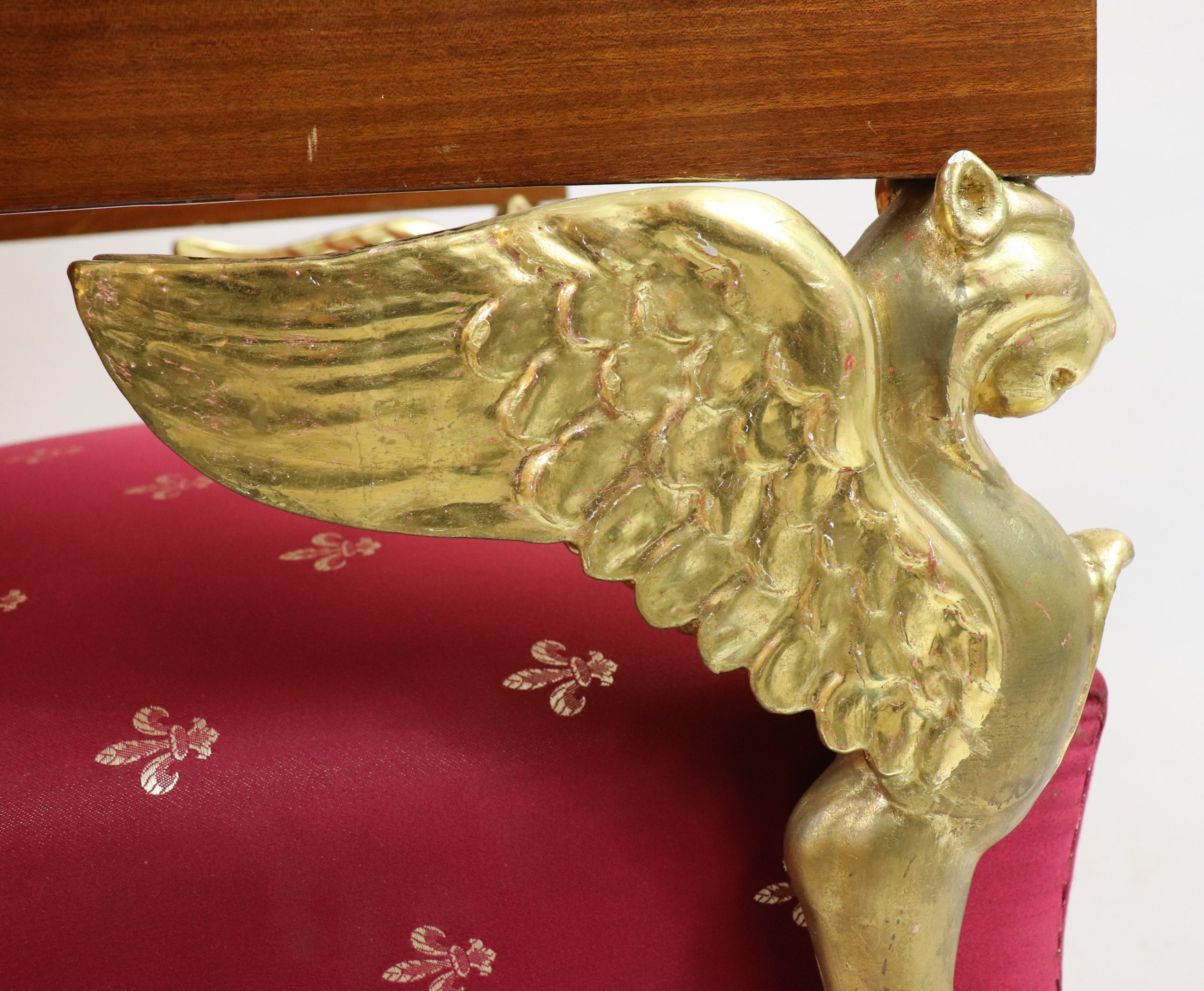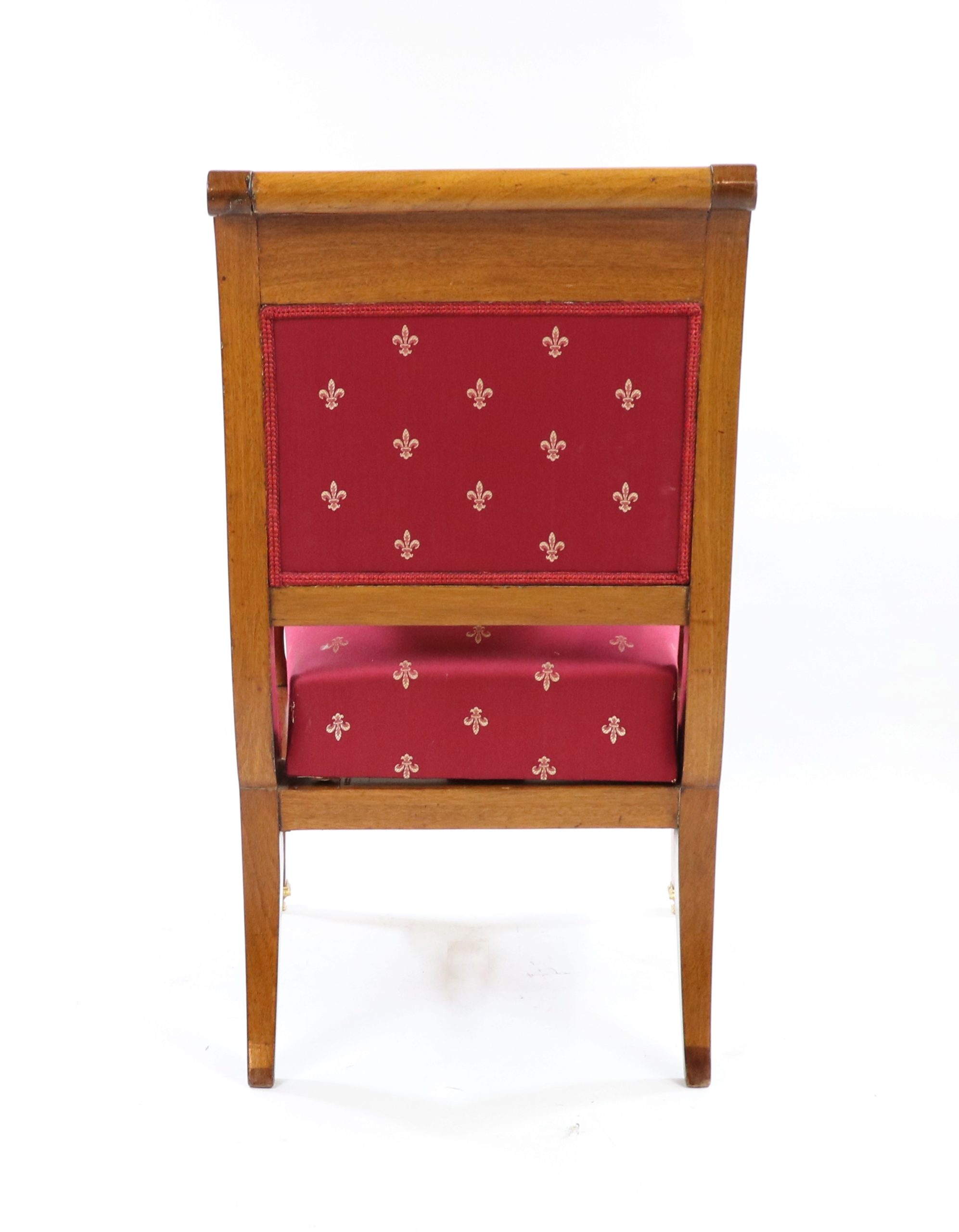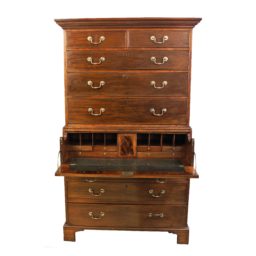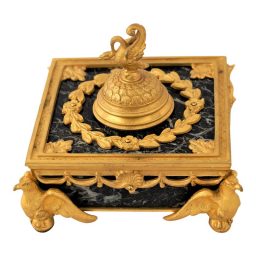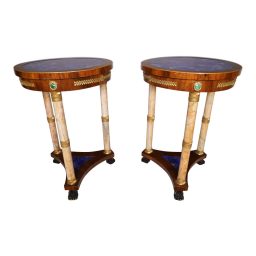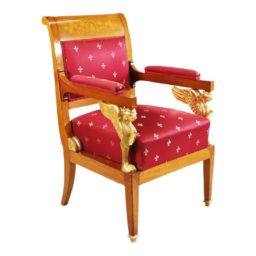Description
This 1810 French Empire winged lion armchair attributed to Charles Percier embodies the Empire style. Charles Percier was a French architect and interior designer who was famous for his building and decorating during the reign of Napoleon I. He helped create the influential Empire style of interior decoration and some of his famous works include the Louvre, Tuileries Palace, and the Paris Opera House.
Empire style was a design movement that originated in France under the rule of Napoleon I. After a victory from Egypt, many furniture pieces during that era began to display certain Egyptian motifs. Soon after, a combination of Egyptian patterns along with ornaments borrowed from Ancient Greece and Rome became staple characteristics.
The arms, back, and legs have all been meticulously carved from beechwood. Beechwood is a very hard and tough wood that allows it to withstand common shocks and wear. The arm supports have been finely carved into the shape of winged griffins and gilded. These mythical creatures were made from a combination of the body of a lion with wings and feet of an eagle. Griffins were often used to denote strength, leadership, and military courage. They became powerful Napoleonic symbols. The ‘Winged Lion of Venice’ was taken to France after Napoleon’s conquest of the Venetian Republic.
On the center of the headrest, there is an inlaid lion’s face with a laurel crown surrounded by honeysuckle. This was a nod to Napoleon famously crowning himself emperor by placing a Roman laurel wreath on his head. On the sides of the headrest, which has been carved to smoothly mimic a Greek scroll, there are again, inlays of the honeysuckle flower. On the back of the arm rail, there are gilded wing motifs. Empire-style furniture often heavily featured wings since they were a symbol of Napoleonic France.
Empire chairs often have broad and simple lines, not necessarily straight and often slightly curved. Subtleness in detail can be seen in the construction of the tapered front legs and saber back legs. The gilt brass caps add a nice pop of color to the front feet. These artistic additions to the chair create an overall sense of unity among the design elements.
Following the Empire style, the seat and back have been upholstered with a deep red silk damask decorated with fleur-de-lys. Fleur-de-lys translates to ‘Lillies’ in French and is a decorative design and symbol of French royalty. In keeping, the luxurious red silk was a staple color of the French flag. Matching red double braided welt trims the back cushion as well as the manchettes. Overall, this is a museum-quality historical piece. The attention to detail and the history behind every artistic choice make it a one-of-a-kind chair fit for the Emperor or Empress of today!
Overall Dimensions of each: H= 40 in. W= 25 in. D= 23.5 in. 30 lbs.
Arm Dimensions: Height= 29.5 in. Length= 21 in.
Seat Dimesions: Height= 20.5 in. Seat: W= 20 in. x D= 21 in.
